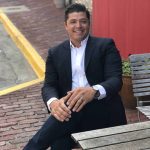There is real, and there is perceived risk, and when it comes to Wall Street, you never know what’s real and what’s perception because of behavioral and market biases.
Wall Street peddles this whole risk-reward paradigm where the potential reward of an investment correlates with the degree of risk you’re willing to undertake.
The higher the risk, the higher reward. And for the risk-averse investors, there are low-risk options that may pay less, but at least you have less of a chance of losing money.
Wall Street’s risk-reward paradigm is Bible to mainstream investors. According to their doctrine, there’s just no way to achieve high returns at reduced risk. And this risk-reward concept is institutionalized.
It’s indoctrinated in all of us from an early age, starting with the education system straight on through Corporate America, Wall Street, and the whole financial services industry. The message is that Wall Street is the only choice for investors. It has something for everyone. If you don’t like high risk, diversify or let a “skilled” financial planners do the trading for you. For the risk-takers, try day trading.
But what if you want higher returns at a reduced risk?
Wall Street says it’s not possible.
Wall Street’s idea of risk is institutionalized, and it’s pounded into our heads from all directions.
On the one side is institutionalized risk and on the other is a behavioral risk. Behavioral risk is a perception of risk driven by behavioral biases. Herd behavior is the prime example of this perception of risk. As humans, we find comfort and safety in groups. It’s no different with investing.
Investors move in crowds because of two behavioral biases:
- Herd Mentality.
- FOMO (the fear of missing out).
Herd mentality says investors tend to rely on emotions when investing instead of conducting their own independent analysis. The reasoning is that everyone can’t be all wrong. Investors acting on FOMO don’t want to be left behind. If something good happens, they don’t want to be the ones left in the cold. The fear of being left out four outweighs the fear of failure.
Behavioral biases like herd mentality and FOMO distort risk.
The perception of safety in numbers can’t be further from the truth because the herd that supposedly provides comfort can be the same herd that leads everyone over a cliff.
Self-made millionaires stand apart from the crowd because they had the courage to break from the crowd.
But the herd and Wall Street wants you to believe that breaking away from the crowd is high risk – even potentially life-threatening. Like our cave-dwelling ancestors who belittled and ostracized the lone rebel with the courage to venture away from the herd, modern investors make fun of any investors not like them – investors who invest based on emotions and base their investment decisions on hype and social media.
Another tactic used by the herd to deter Wall Street deserters is to bundle all investments outside of Wall Street into the basket of high-risk “alternative investments.” You can’t make it outside of Wall Street is the message.
Savvy investors know better. By independently learning of and analyzing alternative investments on their own, sophisticated investors can see through the fog of institutionalized and behavioral risk.
Risk becomes much clearer when not looking through the prism of Wall Street. Instead of dealing with a distorted perception of risk, sophisticated investors seek alternative assets that lend themselves to independent analysis based on data, numbers, and economic fundamentals.
Data, as opposed to emotions, becomes the true gauge of risk.
For those with the courage to take the risk to break away from the crowd and from years of institutional indoctrination, risk suddenly becomes much clearer. And many investors who break away inevitably discover the truth that with certain alternative assets – tangible assets like real estate and income-producing businesses – there are opportunities to reduce and mitigate risk without sacrificing returns.
In fact, in some cases, returns can even be improved. To Wall Street, that sounds like heresy, but it’s an infallible truth to investors who know better.
If your understanding of risk comes from Wall Street, it’s time to forget everything you think you know about risk.
The ultra-wealthy are ultra-wealthy because they threw out everything they thought they knew about risks and investments. They broke from the crowds to pursue the holy grail of investments – investments that offer above-market returns but at reduced risk. Commercial real estate is one such investment.
To take advantage of the world of alternative assets, you have to take the first step. Adjust your perception of risk by throwing out Main Street’s idea of risk. Take the risk of being snubbed by friends, family, and colleagues by trying something different.
To the middle class and Wall Street, you’d be taking a big risk in doing so, but the ultra-wealthy will tell you differently.
Only when you’re able to embrace the true reality of risk, your wealth will only grow in relation to your acceptance of new kinds of risk.







